The Creative Exchange Programme
Creative Exchange
The FX Creative Exchange is an exciting transdisciplinary incubator programme supporting collaborations between early-career/emerging researchers across the University of Exeter and Falmouth University. The programme aims to supports the development of a shared research culture around the themes of ecology, creativity, sustainability, and environment. This is a renewed programme, building on a decade of creative exchange collaborations. To find out more about this new phase of the Creative Exchange please visit the University of Exeter Arts and Culture website.
FX Creative Exchange is co-funded through a partnership between Exeter’s Environment and Sustainability Institute (ESI), Falmouth University, and Exeter Arts and Culture. You can access a full archive of Creative Exchange collaborations 2013-2023 below.
If you would be like to be kept in the loop about FX Creative Exchange events and opportunities, please contact esienquiries@exeter.ac.uk
Previous collaborations
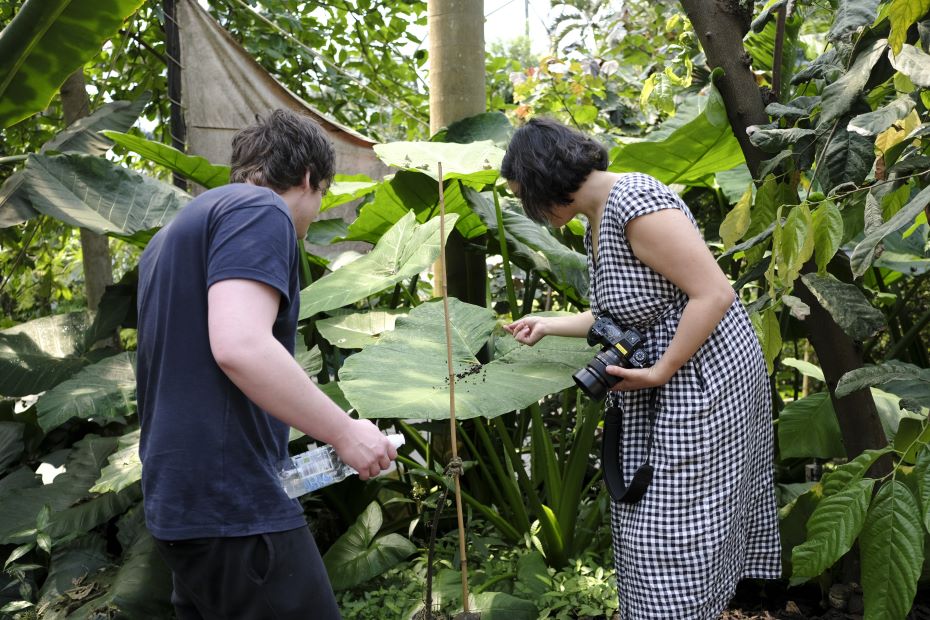
Mapping Emergence - Creatively Exploring the World of Social Insects
University of Exeter Research Fellow, Thomas O'Shea-Wheller, and Falmouth University Lecturer in Photography, Catarina Fontoura, reflect on their fascinating collaboration co-creating artworks with ants as part of the pilot FX Creative Exchange programme.
This exciting project which took place between May and July 2023 saw the worlds of art and science collide to explore creativity, collective intelligence, and self-organisation amongst a diverse array of social insect species in the UK.
To find out more and read the full article visit the University of Exeter’s Arts and Culture website.
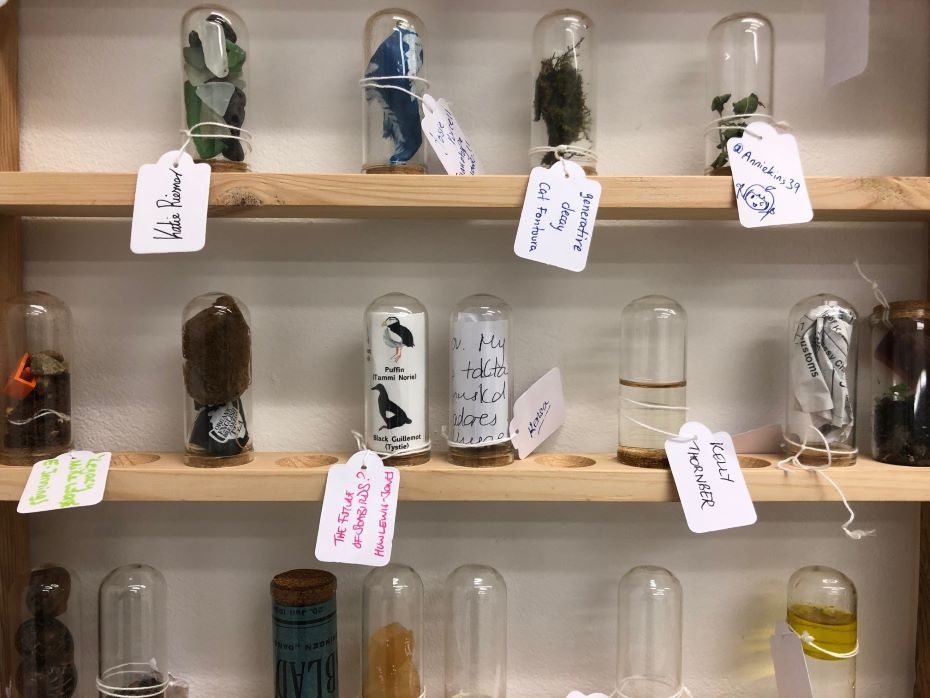
FX Creative Exchange Pilot Programme 2023
The FX Creative Exchange is an exciting transdisciplinary incubator programme supporting collaborations between early-career/emerging researchers across Falmouth and Exeter Universities. The programme aims to supports the development of a shared research culture around the themes of ecology, creativity, sustainability, and environment.
The programme is co-funded through a partnership between Exeter’s Environment and Sustainability Institute (ESI), Falmouth University, and Exeter Arts and Culture. This is a pilot phase of a renewed FX Creative Exchange programme, building on a decade of creative collaborations hosted by the ESI.
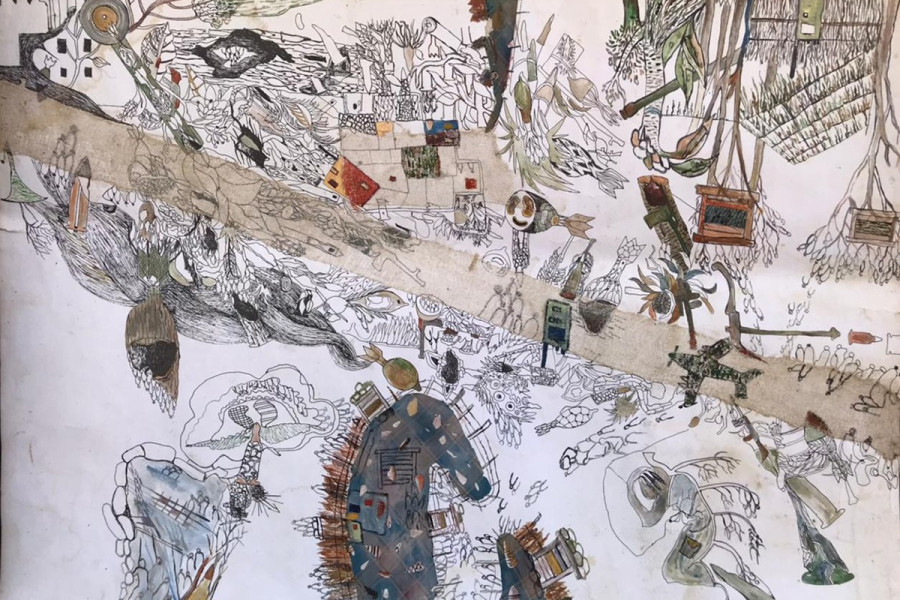
Home/Land
3rd - 28th March 2023. Six artists from Jaffna explore memories of home and experiences of loss in the aftermath of the civil war in Sri Lanka. The exhibition forms part of an international partnership between researchers at the University of Exeter (HaSS Cornwall), University of Leicester, Museum of London Archaeology and the Arts Faculty at the University of Jaffna, Sri Lanka, who together have been collaborating on a project entitled Identity, place and community: archaeologies of the recent past in post-war Jaffna, Sri Lanka. An online version of the exhibition can be viewed via the University of Exeter Arts & Culture website.
Special Event: On 7 March 2023, 2.30pm - 4.30pm, in the ESI Building. Join Professor Shanaathanan Thamotharampillai and an invited panel to discuss the exhibition in conversation, with broader themes of heritage, identity, land and loss.
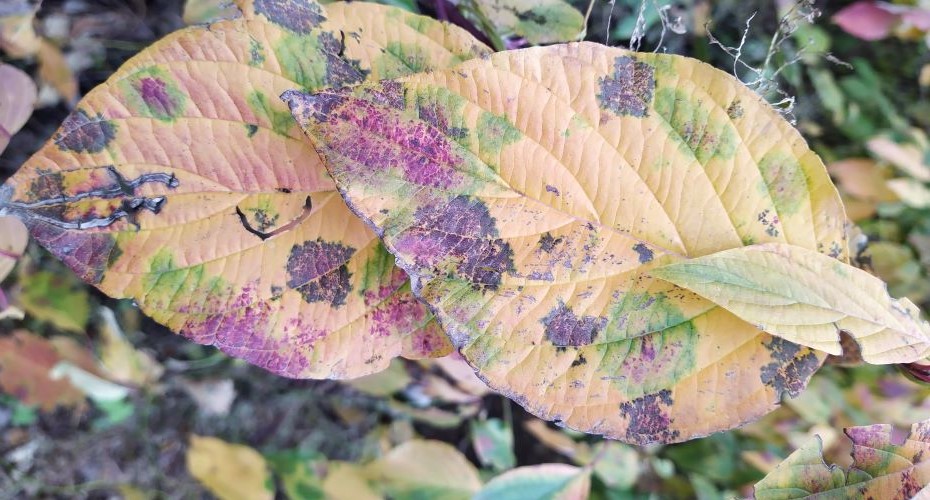
Facilitated Industrial Decay: A Shadow Side of Urban Riparian rehabilitation
From January – February 2023 ESI will host Madeline Donald, a visiting PhD student from UBC Okanogan. Madeline’s research is an investigation into Brandt’s Creek, in Kelowna, British Columbia, unceded and occupied syilx territory, and the riparian beings it supports. This creek came to into being as a result of Kelowna’s early colonial industrialization, a process that partitioned and paved over the expansive and ecologically complex floodplain that preceded the city, setting specific courses for water to flow through. Presently, the city’s waterways do not have the capacity to accommodate for current, let alone expected flows. Madeline is therefore asking the question, ‘What does Brandt’s Creek need in order to be(come) its most bountiful and vibrant self given the past histories, current policy ecology, and future needs of its diverse riparian communities?’
Madeline will be working from the ESI Creative Exchange Studio, displaying a selection of maps and photographs from this research to date and is keen to engage with colleagues interested in the ecocultural significance of material change and transformation.
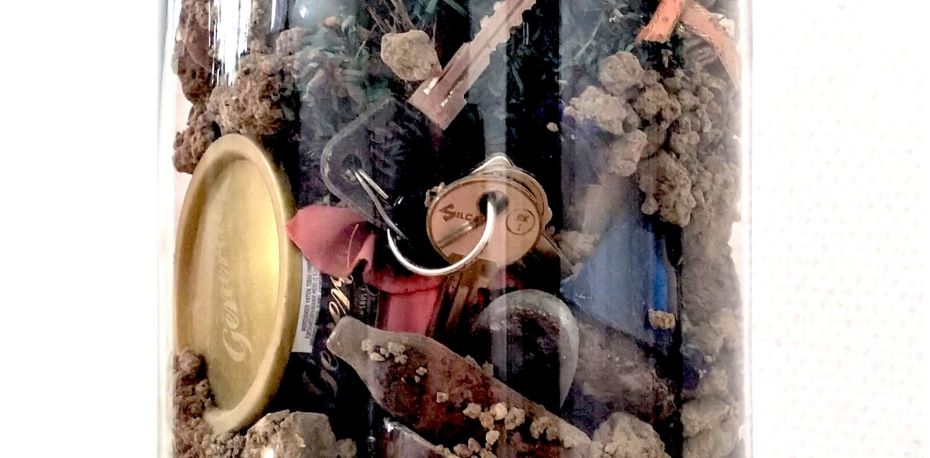
RENEWAL
EXE/FAL CREATIVE EXCHANGE
Over the past decade the ESI Creative Exchange programme has facilitated dozens of collaborations between creative practitioners and researchers on the University of Exeter's Cornwall Campuses. On 16 November 2022 the ESI, Falmouth University and Arts & Culture Exeter hosted an event to imagine what the next 10 years might hold for the programme. RENEWAL EXE/FAL CREATIVE EXCHANGE was an opportunity for researchers and students from Falmouth University and the University of Exeter to discuss the renewal of the Creative Exchange programme as a joint Exeter/Falmouth initiative.
Research staff and students from both universities were invited to join an open conversation over lunch, followed by an interactive workshop for early career/emerging researchers. As part of the workshop participants were asked to fill a small bell jar with something which represented their background and interests. We had some fantastic discussions about the future shape of our Creative Exchange programme.
Image © Tim Flohr Sørensen
.jpg)
5th October – 12 December, exhibition launch at the ESI Welcome event Thursday 13th October 4-7pm
Seaweed Futures is a collaboration between visual artist and illustrator Tom Hubmann with social and natural scientists Dr Tom Chaigneau, Dr Ian Ashton and Dr Katie Orchel from the University of Exeter. The aim of the project was to develop an interactive research tool that helped visualise potential future scenarios relating to seaweed farming in the South West. The output enabled a more effective consultation process and meaningful dialogue to occur between local communities, potential stakeholders and academics. Using engaging and easily digestible visual imagery in this way created an exciting space for participants to explore complex data, research and ideas effectively in a new and innovative way.
Images: Seaweed Futures © Tom Hubmann
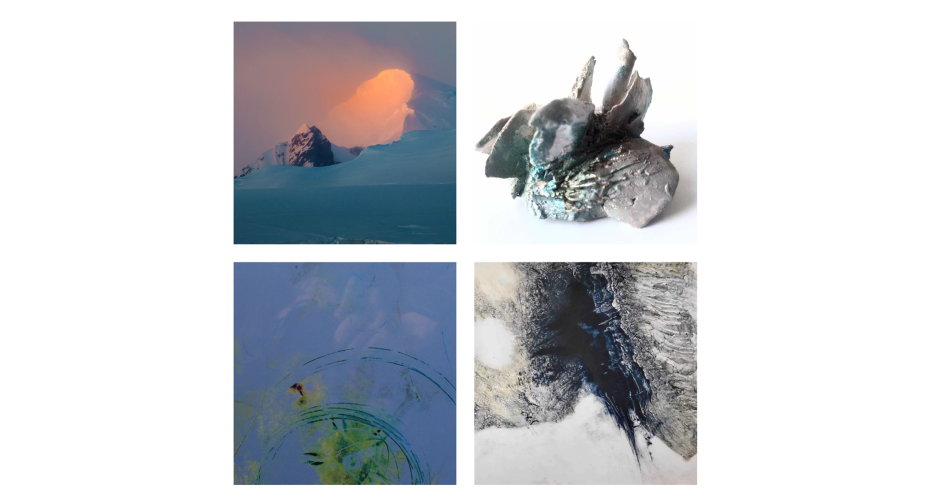
Rare Earth team
Rare Earth is an exhibition which intertwines scientific and visual research in a multi layered collection of micrographs, photographs, paintings, sculptures and sound recordings.
It was created in collaboration between a team of ESI-based scientists, James Scourse and Alejandro Roman Gonzalez, and Cornish artists Bridget Roseberry and Katrina Slack, who investigated and responded to climate and environmental change in the Antarctic.
The Rare Earth team will host an opening on Tuesday 31st May 4.30pm – 6.30pm. The exhibition continues from the 1st - 24th June. Open weekdays 9-5pm, except bank holidays. If you can't make it to the physical exhibition, view the online version here.
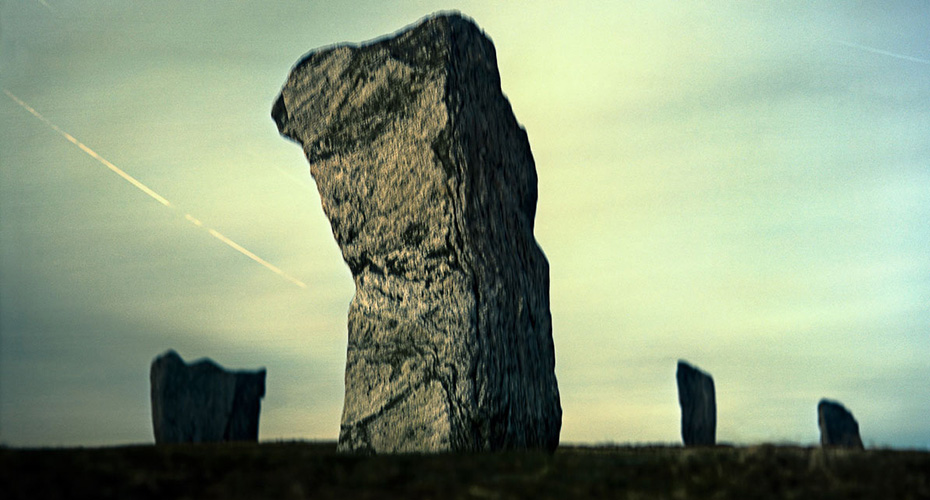
Our Disappearing Darkness and Recreating True Night
Ninety-nine percent of the population of the United States and Europe experience light-polluted skies to the point that well over half of them can no longer see the Milky Way. Artist and educator MJ Sharp, who has been making large-format, long-exposure photographs for over a decade, is collaborating with Professor Kevin Gaston to explore this ‘disappearing darkness’ as part of a 2021/2022 Fulbright award.
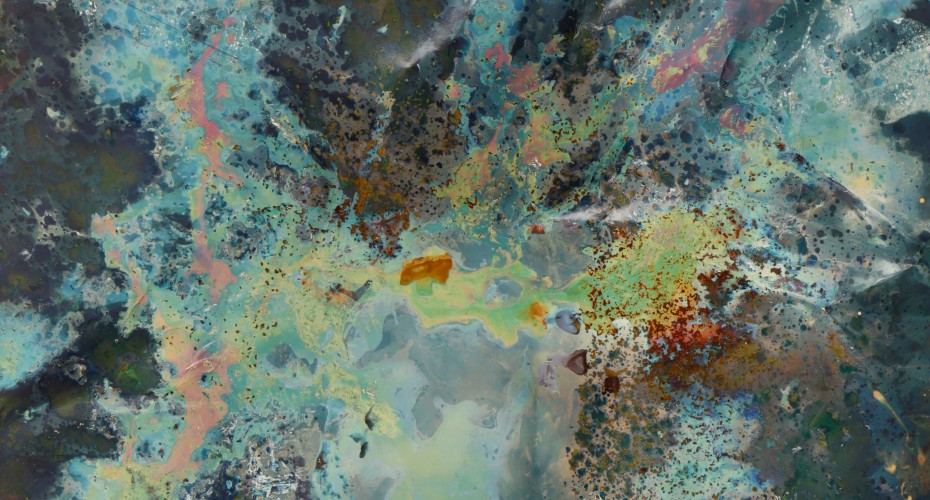
Origins of Silver
Lustrous, reflective, ductile, malleable, conductive, light sensitive…the unique properties of silver are used in a huge range of applications, from batteries to solar panels. Origins of Silver is a research project that aims to unearth some of the complex histories and entangled networks of this precious metal, with a specific focus on its use in analogue photography. This collaboration between artist & lecturer Oliver Raymond Barker, Professor Karen Hudson-Edwards and Professor Nicola Whyte will build a platform for future research and pose questions around this most fascinating of elements. Five independent artists will also be contributing research ideas to the project – William Arnold, Edd Carr, Alice Cazenave, Melanie King & Guy Martin.
.jpg)
The Researching Resistance exhibition developed from a collaboration between investigative artist Simon Ryder and the University of Exeter’s AMR network, and has been curated by Dr Kelly Thornber. Featuring portraits of members of the Network, Ryder’s artistic response illustrates that antimicrobial resistance (AMR) is an issue that goes beyond disciplinary, societal and national boundaries.
Fifteen members of the AMR Network, spanning the breadth of subjects and career stages, were invited to feature in a series of photographic works. Originally exhibited at the Forum, Streatham Campus, Researching Resistance will be on display in the ESI Creative Exchange, Penryn Campus from 14 January – April 2022.
Image: Dr Liliane Mukaremera © Simon Ryder
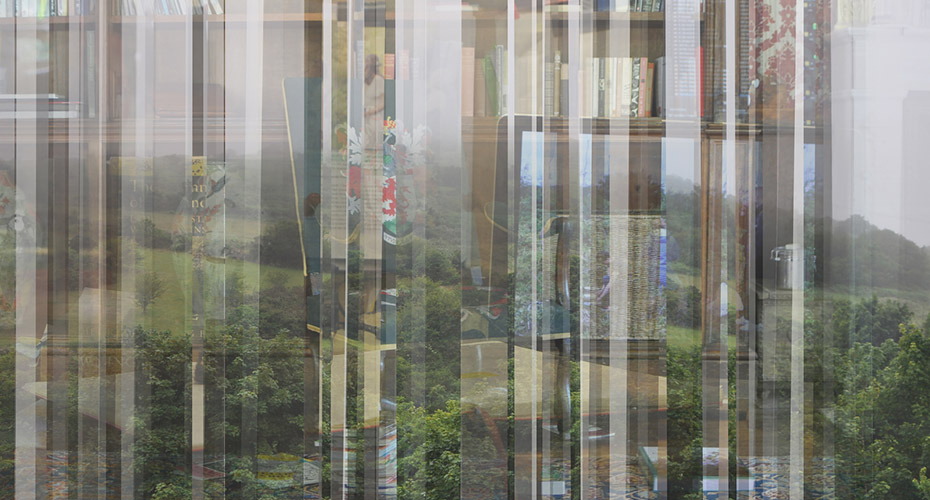
Catalyst
2021 marks almost a decade of the ESI Creative Exchange, to celebrate this fascinating programme of creative collaborations, we’re delighted to be working with Exeter Arts and Culture on a stunning new online exhibition called Catalyst.
We have developed a virtual gallery where you’ll be able to navigate through a series of spaces to view photography, creative writing, visual art and film all exploring issues of climate, environment and sustainability. Launching on Earth Day (Thursday 22nd April), the exhibition will feature artworks of twelve previous Creative Exchange participants, which have been developed since their original collaboration.
Image: Towards Field Station Catalyst Remix © Bram Thomas Arnold 2021
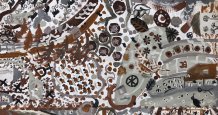
Painting a Parish Future
Painting a Parish Future is a collaborative project by ecological artist Peter Ward and Senior Lecturer in Politics Dr Joanie Willett. The project explores the importance of ecological engagement to political process through interdisciplinary workshops and research. Workshops involve group sharing, walking and participation in a communal painting using locally gathered earth pigment paints in response to specific local ecologies. Events were held in Pendeen and Gorran Parishes in Cornwall with the support of the Economic and Social Research Council and as part of the Creative Exchange Programme at the Environmental Sustainability Institute, Exeter University.
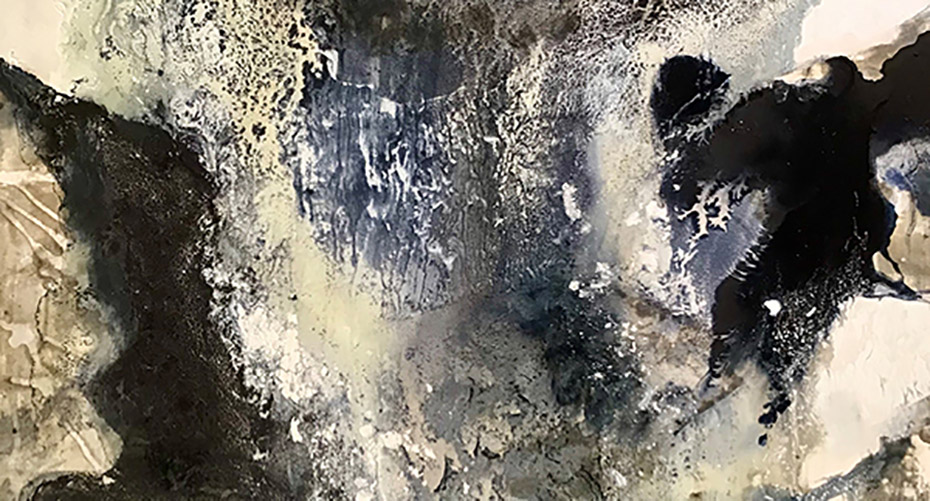
Rare Earth
In 2020 painter Bridget Roseberry and painter and sculptor Katrina Slack collaborated with Professor James Scourse and researcher Alejandro Roman-Gonzalez from the University of Exeter on 'Rare Earth', an immersive online exhibition inspired by an Antarctic research expedition taken by the academics in 2019. The work produced by Roseberry and Slack explored microscopic worlds in the ocean and on the ice whilst simulataneously drawing attention to the effects of climate change on the Antarctic environment.
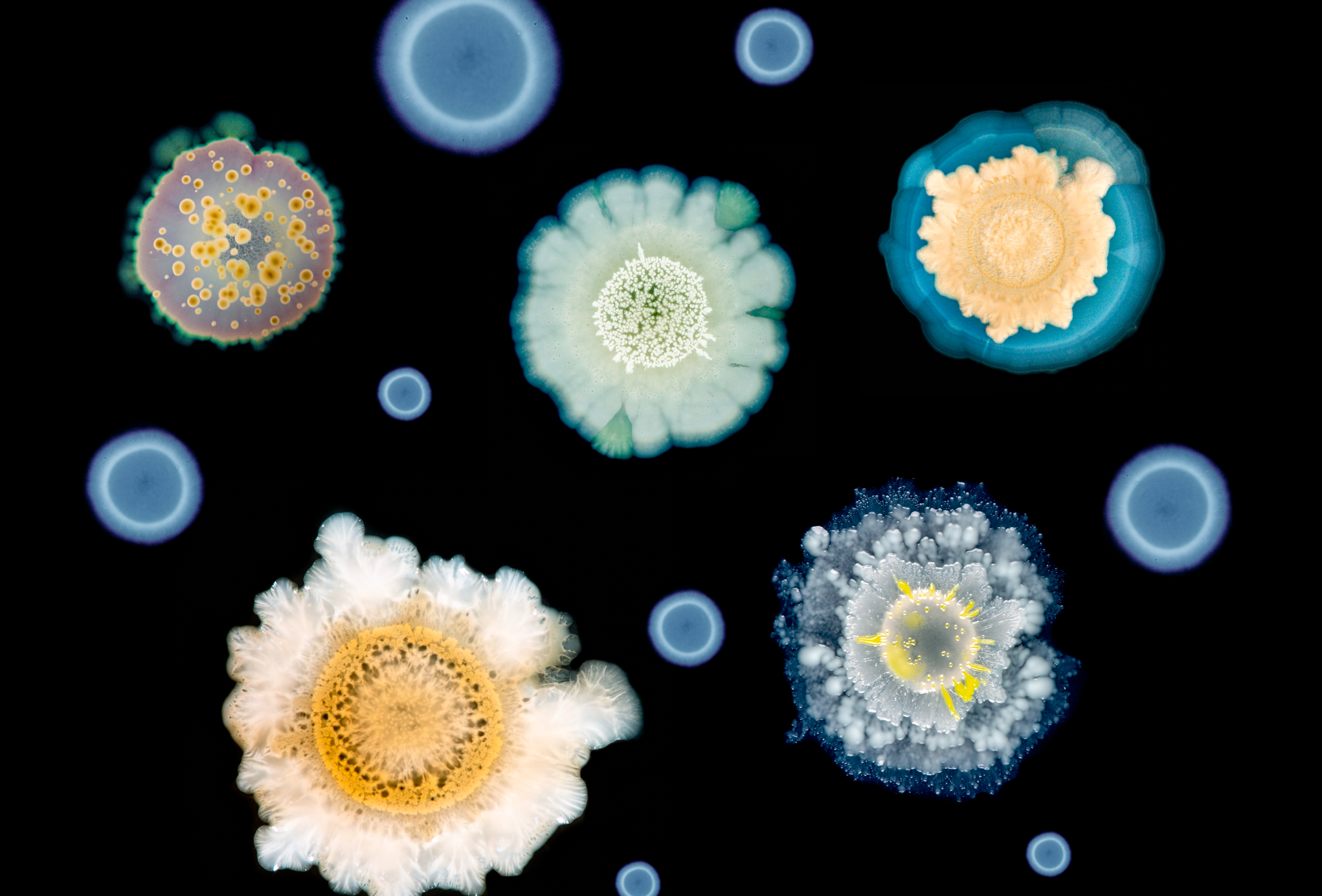
Should I Stay or Should I Go?
This exhibition ran from 28 February - 3 April 2020 as part of our Underworlds series. Dr Tim Cockerill and Dr Elze Hesse worked together to produce of a series of large-scale macro photographic images visualising the effects of social and environmental cues on swarming behaviour in a model bacterium.
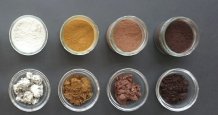
Underworlds
From January-June 2020 the ESI Creative Exchange will host an extended programme of art-science collaborations on the topic of UNDERWORLDS. In a series of four projects, artists and researchers are exploring themes of the underground, the undersea, the hidden and the microscopic.
Image provided by Pete Ward
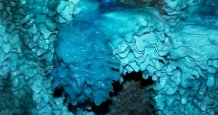
Hidden in Plain Sight
This exhibition ran from 17 January - 21 February 2020 as part of our Underworlds series. Hidden in Plain Sight was a photographic journey into the subsurface of Cornwall’s mining heritage. Photographer, caver and mine explorer Hugo Glasier collaborated with Laura Newsome (an ESI-based geomicrobiology lecturer), Tomasa Sbaffi (a PhD student studying the microbial communities living in Cornish mine waste), and Carmen Falagan Rodriguez (a researcher in the ESI geomicrobiology laboratory).
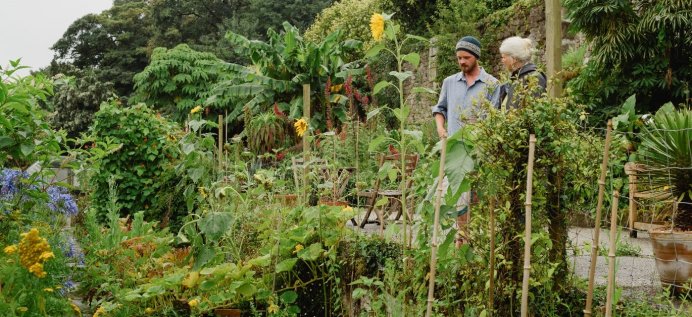
A Stitched Survey of the Dyer's Garden
Christiane Berghoff worked on an area of the walled garden on the Penryn Campus, planting and nurturing a variety of plants selected for the purpose of botanically dying textiles and for their value to insect pollinators. She worked in collaboration with PhD student Will Hawkes, an environmental biologist at the University of Exeter whose research is concerned with recording the migratory behaviour of insect life.
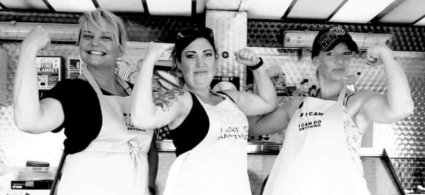
Food for Change exhibition
The Food for Change programme used food to inspire individuals to learn new skills and to progress into work or education. Participants in the programme used photography to document their experience of gaining new food skills through workshops with community chefs and growers in Cornwall.
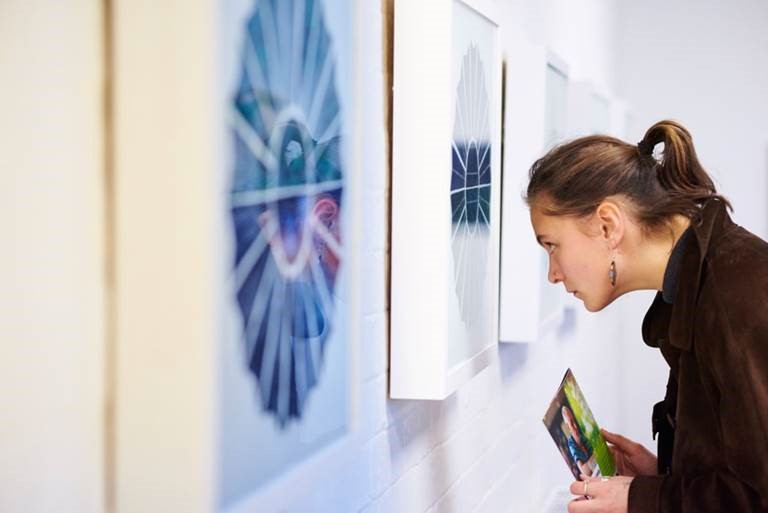
Pretty Useful Solar Panel Artwork
Art and Energy artists Chloe Uden and Naomi Wright collaborated with post-doc researcher Katie Shanks to challenge the aesthetics of silicon solar PV in order to re-imagine solar panels as places for artworks of the future.
.jpg)
A Transect for Trelowarren
Bram Thomas Arnold is an artist who started with walking and kept going, into performance, installation, drawing, academia, broadcasting and writing. Walking has become the foundation of his transdisciplinary practice, a practice that does not restrict itself to traditional notions, boundaries, mediums or modes of practice: it is an ecological form of practice that is simultaneously Conceptual in its methods and Romantic in its outcomes.
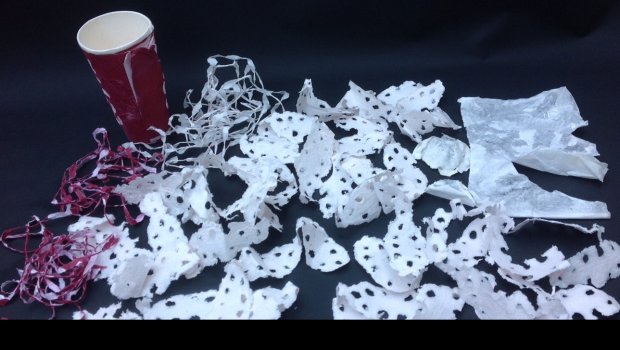
Deep Materialism and Caretaking
Dr Alison Harper (environmental textile artist) and Dr Sarah Chave (honorary researcher in the University of Exeter Graduate School of Education) collaborated to explore the human use and abuse of the material world.
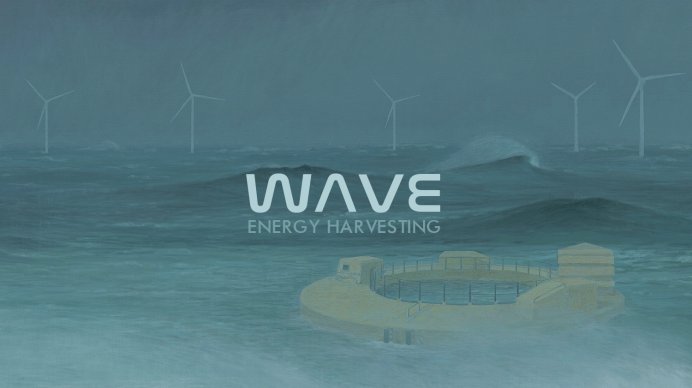
The Wave Energy Harvesting
This collaboration artistically presented mathematical and engineering research outcomes related to ocean wave and wind energy extraction through the use of wave and wind energy converters.
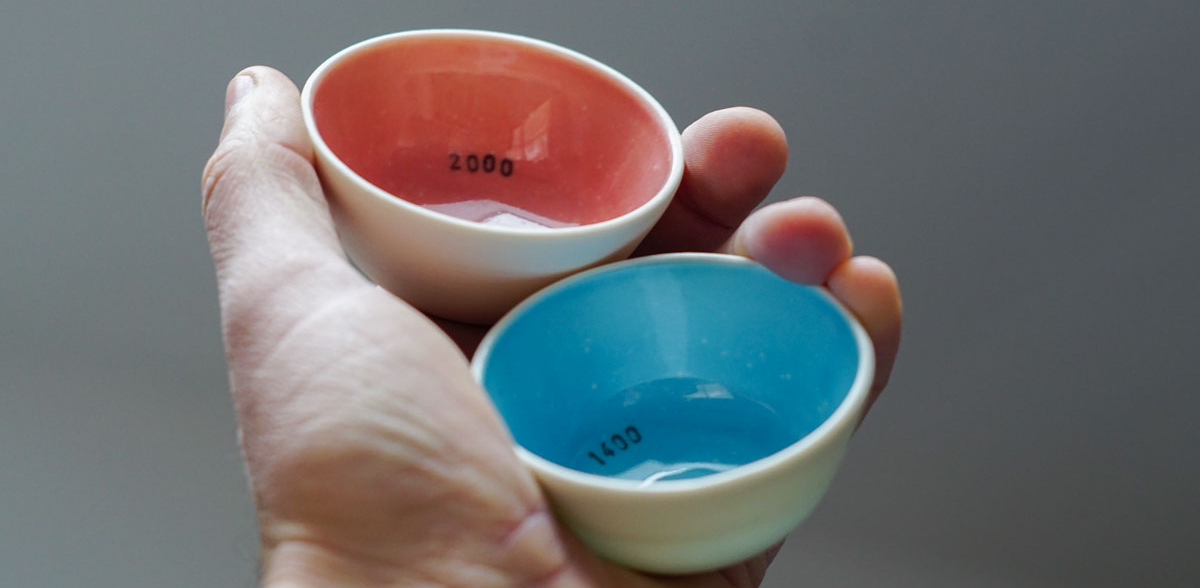
See Shells and Climate Change
A collaborative project by ceramic artist Jake Boex, climate scientist Professor James Scourse and Phil Dyke (National Trust Coast and Marine Advisor), this exhibition explored our emotional reaction to climate change.
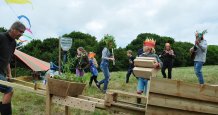
Boatbarrow
In July 2018 seven families took part in ‘Retreat’, a creative residency to imagine and design how to live when lives are radically affected by climate change. They came together as climate refugees fleeing their flooded homes to gather in a holding camp, where they had to reinvent ways to meet their basic needs and figure out how provide things they had taken for granted.
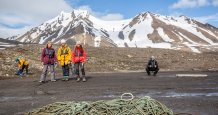
Sail Against Plastic
Sail Against Plastic, a pioneering team of scientists, filmmakers, photographers and artists, made an expedition to the Arctic to determine the levels of plastic pollution making its way there on ocean currents.
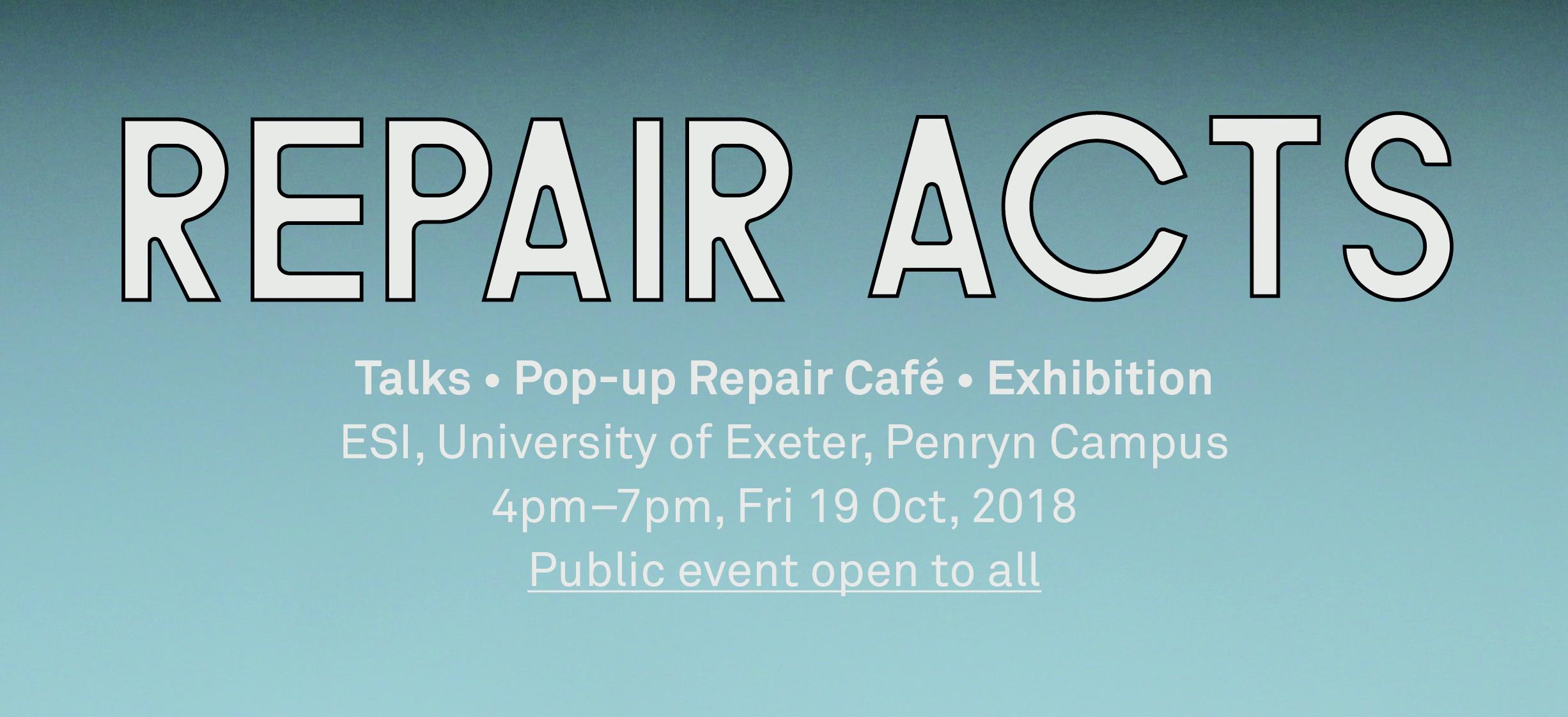
Visible Mending
On the 19th October the ESI hosted an event which looked at the importance of repair in the circular economy and the fantastic work that is happening around Cornwall to repair our much-loved items. The evening included talks from Stefano Pascucci, ESI Professor in Sustainability and Circular Economy, on ‘Community, Circularity and Innovative Practice’, and Pete Halswell, Falmouth & Penryn Repair Café Chair, on ‘The First Cornish Repair Café: Origins and Outlooks’.

Kurt Jackson at the ESI
An exhibition of Kurt's work celebrating his new painting Taxonomy and Biodiversity being installed in the ESI and the reinstallation of water sculpture Cornish Trembling Sea Mat. Read more.
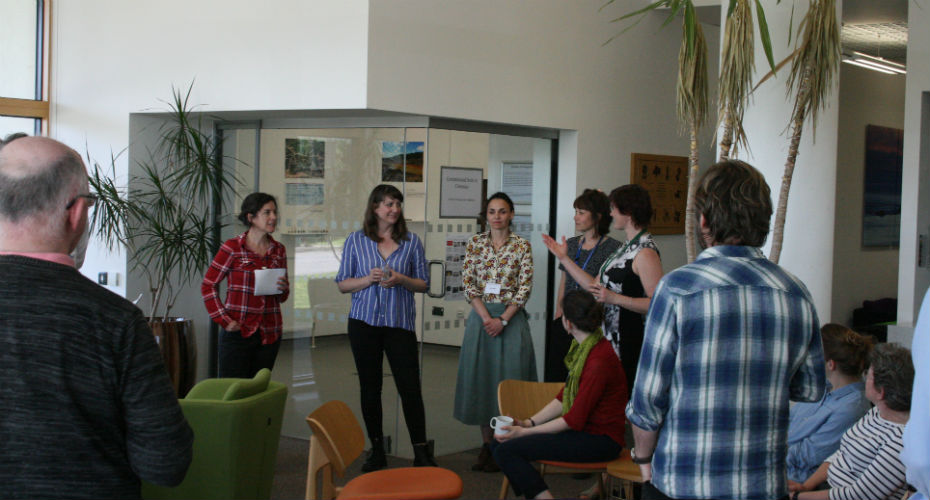
Melting Pot
The University of Exeter’s Environment and Sustainability Institute (ESI) hosted the Creative Exchange Programme’s ‘Melting Pot’ on 19 April 2018. The event brought together local creative practitioners to discuss and develop new collaborations with University of Exeter research staff. Details of future Melting Pot events will be posted here. Read more.
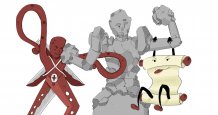
Rock Paper Scissors - When Microbes Play Games
Rock, Paper, Scissors – When microbes play games was a graphic novel telling the toils and hardships of a cunning little virus triumphing over its enemies with the help of a valiant knight. It illustrated the intense struggles between viruses of bacteria and their bacterial hosts.
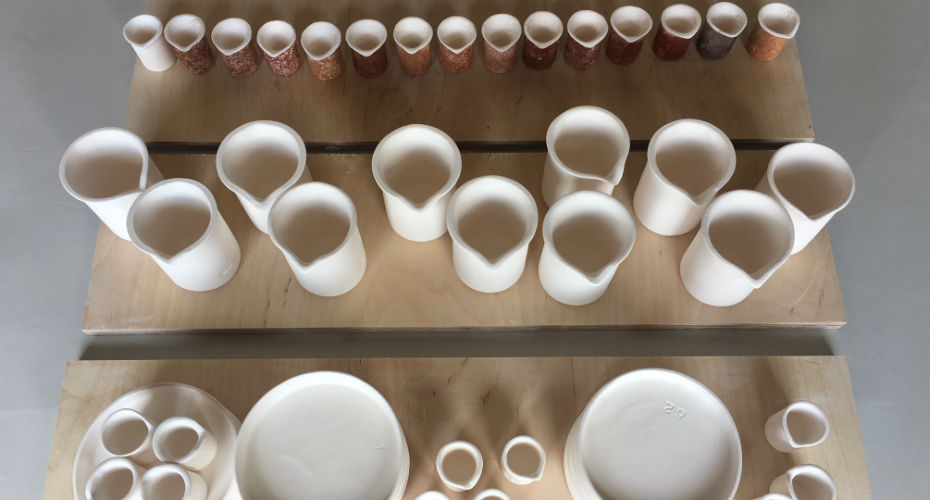
Contaminated Soils in Ceramics
This Creative Exchange project forged links between scientist Dr Elze Hesse and ceramic artist Fleur Winter with the aim to bridge their fields through the use of research material and fired ceramics.

More than Food
The exhibition was a collaboration between the University’s Social Innovation Group, distinguished photojournalist Paddy Dowling, and local foodbanks. Reflecting on lived experiences of foodbank use, the images and stories illustrated the complex circumstances at play and the power of localised forms of care.
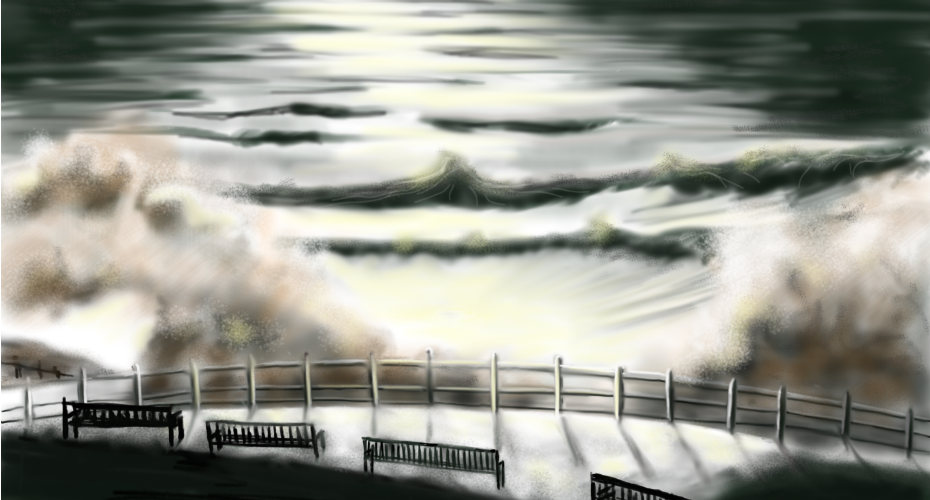
Stuart Townley - The Mathematician and the Artist
The Mathematician and the Artist featured Prof Stuart Townley’s landscape paintings that he reinterpreted digitally. By viewing these paintings as models we use to represent and interpret reality, parallels can be drawn to Stuart’s computer-based mathematical models of the environment. Read more.
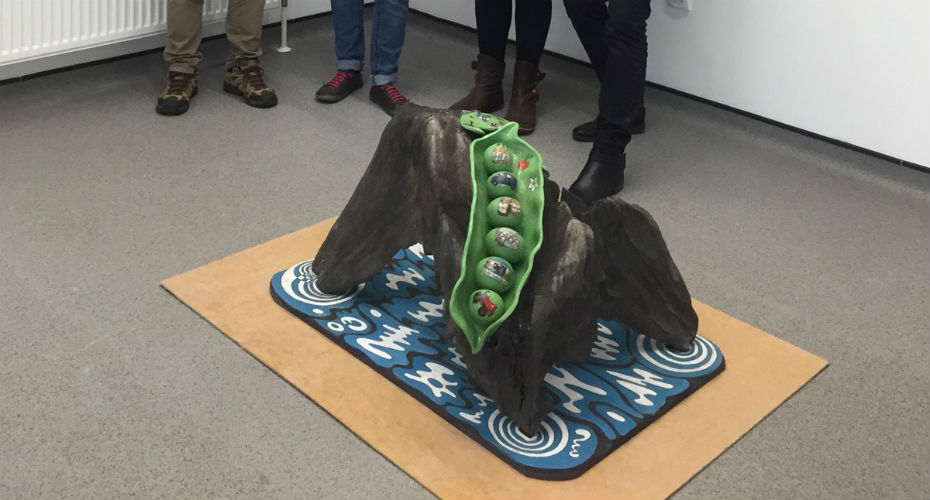
Resilient local food systems in the Tamar Valley
Rosie Fierek’s artwork is inspired by the work that Tamar Grow Local undertakes in the area - stimulating and incentivizing local food production and consumption - and research by ESI researchers Gloria Salmoral and Xiaoyu Yan on water-energy-food nexus in the EPSRC funded WEFWEBs project. Read more.
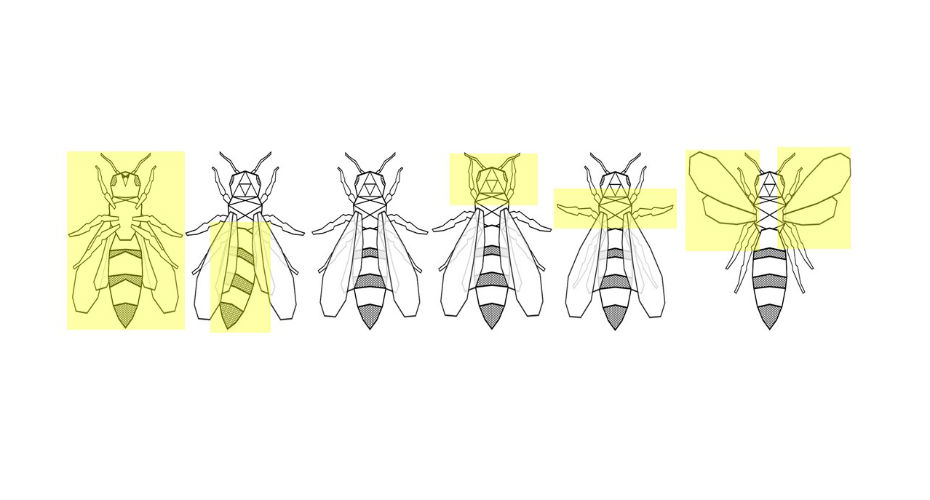
Bee Health: Audio Immersion
Juliet Osborne and Lauren Holt from the ESI facilitated a representation of honey bee data into a contemporary cello piece with an interpretive piece of music for both healthy hives, and those affected by pesticides and disease played by Oak Matthias. Read more.
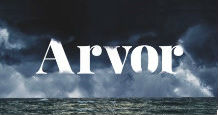
Arvor
Natalia Eernstman, artist, researcher and project manager for Golden Tree, collaborated with the ESI on various projects concerning coastal change, extreme weather and community resilience. Read more here.
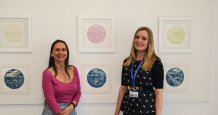
6000 Flowers
'6000 Flowers' was an arts collaboration between Cornwall Area of Outstanding Natural Beauty (AONB - Richard Hardy), the ESI (Dr Grace Twiston-Davies) and artist Jodie Purcell. Read more here.
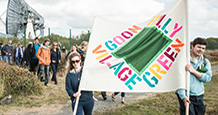
Goonhilly Village Green
Through the Goonhilly Village Green (GVG) project, artists Sara Bowler and Elizabeth Masterton worked with academics and students at the ESI who are conducting research on the Lizard Peninsula's Goonhilly Downs. Read more here.
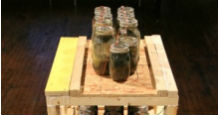
Soil Culture
Artist Marissa Lee Benedict was awarded a Soil Culture residency to work with researchers in the ESI in August 2014. The residency was delivered by the ESI in partnership with the Centre for Contemporary Art and the Natural World (CCANW). Read more here.
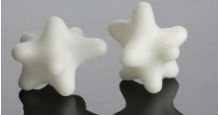
Crafting Stability, Tipping Points and Chaos
Dr Markus Mueller and Samantha Gerlach’s collaborative project sought to translate dynamic-behaviour mathematical models into crafted objects; these were creative interpretations of the concepts of stability, tipping points and chaos. Read more here.
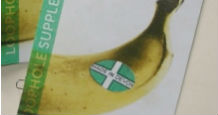
Foreign Soil
Jonathan Bennie, ESI Associate Research Fellow, collaborated with artist and writer Gabrielle Hoad to identify and exploit microclimates where edible dessert bananas might be grown outdoors in the South West. Read more here.
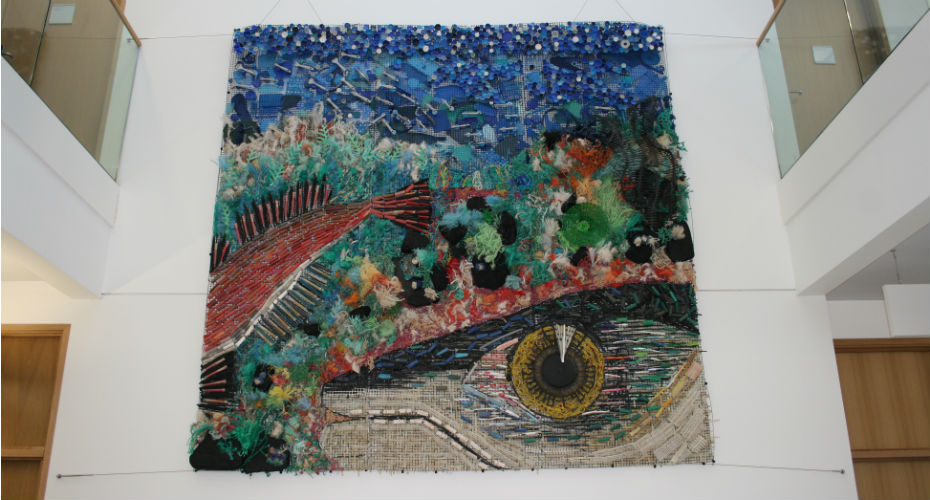
All Washed Up
All Washed Up was a collaboration between Dr Matthew Witt, a lecturer in Natural Environment within the ESI, and Rame Peninsula Beach Care (RPBC), a beach cleaning group from South East Cornwall.
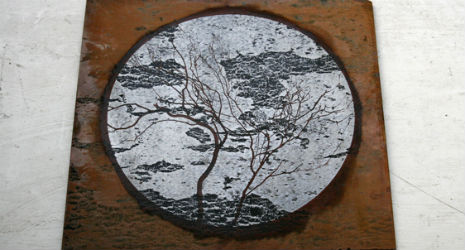
Natural Alchemy
he Natural Alchemy project, a collaboration between Chris Bryan and Oliver Raymond-Barker, is an exploration into process. Read more.
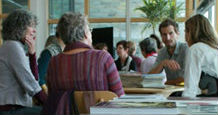
Reshaping Fashion Norms
This project, a collaboration between Clare Saunders, Sue Bamford and Irene Griffin, looked to ask: how might fashion norms be re-shaped so as to reduce the environmental and social impacts of fashion?. Read more here.
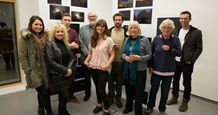
Night Walks
The collaboration between Hannah Guy and Thomas Davies took place between May and December 2013 and stemmed from the ESI research project, ECOLIGHT, which investigates the aesthetic, environmental and human health impacts of artificial light pollution. Read more here.
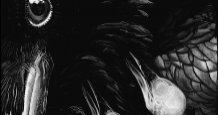
X-Ray Art and Design
Chris Thorn, who joined the ESI as the inaugural Creative Exchange Affiliate in February 2013. Produced the X-Ray Art and Design projecting collaborating with a number of researchers in the ESI. Read more here.
